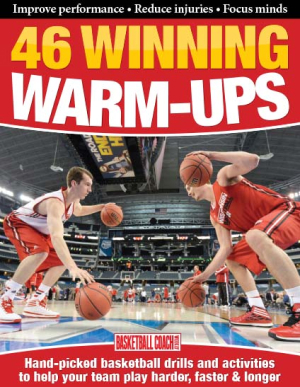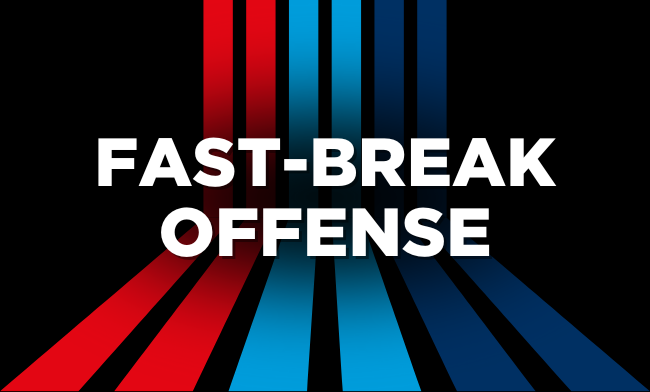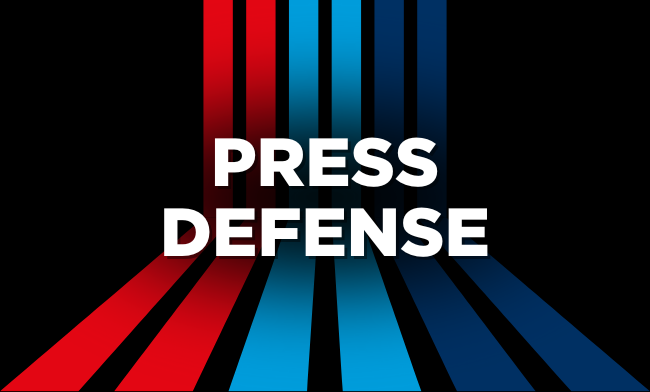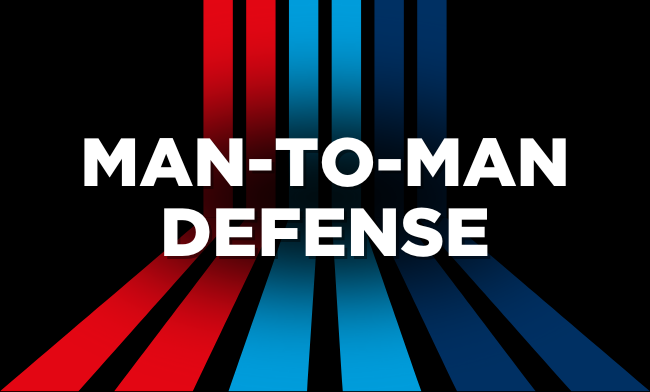Utilizing trap defense in basketball: Strategy, execution, and drills
Trap defense is a high-pressure defensive tactic in basketball designed to force turnovers and disrupt the opposing team’s offensive flow by double-teaming the ball handler in specific areas of the court. When executed effectively, a trap defense can lead to rushed passes, poor decision-making, and easy scoring opportunities for the defensive team. This aggressive defensive strategy requires excellent teamwork, communication, and quick rotations to cover gaps left by the double-team.
Explore the key elements of trap defense, its different variations, when to use it, how to coach it effectively, and the best drills for building a strong trapping defense.
WHAT IS TRAP DEFENSE?
A trap defense involves two defenders quickly closing in on the ball handler to prevent them from making an easy pass or advancing the ball. Traps are usually set in areas of the court where the ball handler is most vulnerable, such as near the sideline, in corners, or just past midcourt. The idea is to apply maximum pressure on the ball handler while cutting off passing lanes, forcing them to either throw a risky pass or make a mistake, resulting in a turnover.
Trap defense is often used in combination with zone or man-to-man defense, depending on the situation and the areas of the court being targeted.
TYPES OF TRAP DEFENSE
Several types of trap defense are commonly used, each with its own objectives and ideal situations:
-
Half-Court Trap
The half-court trap is designed to catch the ball handler as soon as they cross midcourt. In this setup, two defenders trap the ball handler along the sideline, using the midcourt line as an additional defender to limit their movement. The other defenders cover potential passing lanes, making it difficult for the offense to advance the ball. This type of trap is often used to slow down the pace of the game and force poor decisions. -
Full-Court Trap
In the full-court trap, defenders pressure the ball handler from the moment the ball is inbounded. This pressurized approach is highly effective at speeding up the game and forcing mistakes before the offense can cross half-court. Full-court traps are typically employed after a made basket or in situations where the defensive team needs to quickly generate turnovers and scoring opportunities. -
Corner Trap
The corner trap is used to trap ball handlers when they move into the corners of the court, either in the frontcourt or backcourt. Corners are ideal spots for trapping because the offensive player has limited passing angles, and the sideline acts as an additional barrier. This type of trap often results in rushed passes or players stepping out of bounds, leading to turnovers. -
Zone Trap
A zone trap is a hybrid of a zone defense and trapping. Defenders stay in a zone formation but will trap the ball handler when they enter certain areas of the court. This approach works well in a 1-2-2 or 1-3-1 zone defense, where the ball handler can be trapped as they move into a specific defensive zone. The remaining defenders cover passing lanes, making it difficult for the offense to find an open player.
WHEN TRAP DEFENSE IS EFFECTIVE
Trap defense is most effective in the following situations:
- To Force Turnovers: If the opposing team is struggling with ball handling or decision-making, trapping can quickly lead to turnovers, providing easy scoring opportunities.
- Against Young or Inexperienced Teams: Trap defense is highly effective against teams that lack experience or poise under pressure, as it forces them to react quickly in a high-pressure situation.
- To Speed Up the Tempo: Teams looking to speed up the pace of the game can use trap defense to create chaos and force the opposing team to play faster than they are comfortable with.
- Late-Game Situations: When trailing late in the game, teams often employ trap defenses to create turnovers and gain extra possessions, increasing their chances of making a comeback.
HOW TO COACH TRAP DEFENSE
Coaching trap defense requires teaching players to understand when and where to set traps, how to rotate quickly to cover open players, and how to communicate effectively. Here are some key coaching points:
- Timing the Trap: Players must recognize the right moment to trap. It’s crucial to trap when the ball handler is near the sideline or in a corner where their options are limited. Trapping too early or in the wrong area of the court can lead to easy escapes.
- Closing the Trap: Once the trap is initiated, defenders must close in on the ball handler quickly and aggressively. Their goal is to make the ball handler feel suffocated, cutting off their passing and dribbling options.
- Rotations: After the trap is set, the remaining defenders must rotate to cover the passing lanes and protect the basket. Proper rotations prevent the offense from finding an open man and exploiting the temporary double-team.
- Communication: Players need to communicate constantly when trapping. Defenders should call out switches, traps, and rotations to ensure that the defense operates smoothly and doesn’t leave players open for easy passes.
DRILLS FOR TRAP DEFENSE
To build a successful trap defense, players must practice trapping and rotating in high-pressure situations. Here are a few drills to improve trapping skills:
-
2-on-1 Trap Drill
In this drill, two defenders trap a ball handler in a half-court situation. The goal is for the defenders to cut off all passing options and force a turnover. The ball handler must try to pass the ball to an open teammate, who is guarded by a third defender. This drill teaches trapping technique, defensive pressure, and how to rotate properly. -
Full-Court Trapping Drill
This drill simulates the intensity of a full-court trap, where the defense pressures the ball handler from the baseline to half-court. The offensive players try to break the press and advance the ball, while the defense looks to trap and force a turnover. This drill improves conditioning, communication, and the ability to execute traps at game speed. -
Corner Trap Drill
In this drill, the ball handler is forced into a corner by two defenders. The defenders close in and set the trap, aiming to force a turnover or a rushed pass. The focus of the drill is on quick rotations and making the ball handler uncomfortable. Rotations are practiced as other defenders take away passing lanes.
COMMON MISTAKES IN TRAP DEFENSE
Trap defense can be extremely effective, but it also carries risks if not executed properly. Here are some common mistakes to avoid:
- Trapping in the Wrong Areas: Traps are most effective near the sideline or in corners. Trapping in the middle of the court often leads to easy escapes for the offense and wide-open passing lanes.
- Poor Rotations: If defenders don’t rotate quickly enough after the trap is set, it can leave offensive players wide open for uncontested shots or easy passes.
- Overcommitting: Defenders must stay under control when closing in on the trap. Overcommitting can result in fouls or give the ball handler enough space to split the defenders.
CONCLUSION
Trap defense is a high-risk, high-reward strategy that can completely disrupt an opposing team’s offense when executed properly. By mastering the art of trapping, closing passing lanes, and rotating quickly, your team can force turnovers and create transition opportunities. Through focused drills and consistent practice, your players can develop the skills necessary to apply an aggressive trapping defense that keeps opponents on their heels.
Newsletter Sign Up
Coaches' Testimonials

John Allen, AAU National Boys Basketball Commissioner

Wade Wolff, Colfax Youth Development League
Further Reading
Newsletter Sign Up
Coaches Testimonials

John Allen, AAU National Boys Basketball Commissioner

Wade Wolff, Colfax Youth Development League
Discover the simple way to become a more effective, more successful basketball coach
In a recent survey 89% of subscribers said Basketball Coach Weekly makes them more confident, 91% said Basketball Coach Weekly makes them a more effective coach and 93% said Basketball Coach Weekly makes them more inspired.
*includes 3 coaching manuals
Get Inspired
All the latest techniques and approaches
Basketball Coach Weekly offers proven and easy to use basketball drills, coaching sessions, practice plans, games, warm-ups, training tips and advice.
We're at the cutting edge of basketball coaching since creating resources for the grassroots youth coach, following best practice from around the world and insights from the professional game.








